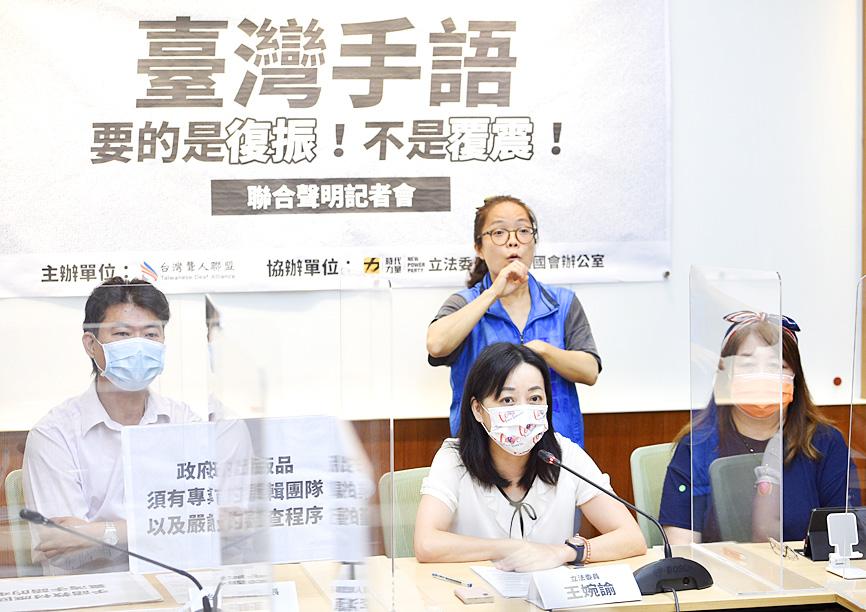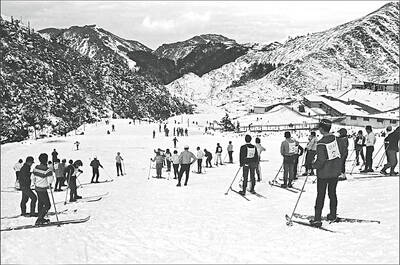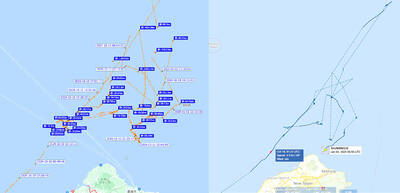The Taiwanese Deaf Alliance and other groups yesterday called on the government to use Taiwan Sign Language (TSL) instead of signed Mandarin in a book planned for toddlers, saying that TSL is a natural language that should be treated as distinct from Mandarin.
Due to its inclusion in the Development of National Languages Act (國家語言發展法), which was passed by the Legislative Yuan on Dec. 25, 2018, TSL has gradually gained attention, the alliance said in a joint statement with 26 other hearing loss associations.
The Social and Family Affairs Administration is in the process of creating an electronic book to teach sign language to children under the age of three, they said.

Photo: Peter Lo, Taipei Times
However, it plans to use signed Mandarin, also known as “grammatical sign language,” they said.
Signed Mandarin, which follows Mandarin grammar, is not a “real” language, while TSL is an independent language with its own grammatical rules, they said.
Using signed Mandarin in the book would be to treat local sign language as an attachment to Mandarin, and to mistake language as something that can be translated word-for-word, they said.
It would go against the spirit of the UN Convention on the Rights of Persons with Disabilities, as well as the act, they said.
To facilitate the preservation, revitalization and development of TSL, the teaching material should use the natural language used by people with hearing impairments, they said.
While TSL is a language with its own developmental history, signed Mandarin is not a sign language, New Power Party Legislator Claire Wang (王婉諭), who sits on the legislature’s Education and Culture Committee, told a news conference in Taipei.
For people with a hearing impairment, TSL is their native language and a culture that should be respected, she said.
Instead of giving parents more options, presenting signed Mandarin alongside TSL in teaching materials would be to treat an artificial system as a real language, said Chen Yi-jun (陳怡君), an assistant professor at Mackay Medical College’s Department of Audiology and Speech-Language Pathology.
Signed Mandarin follows the word order of spoken language and is difficult to understand and far less valid as a means of communication than TSL, she said.
Signed Mandarin also undermines the logic and grammatical characteristics of a visual language, she said.
It is difficult for children with a hearing impairment who learn visually and do not have a foundation in spoken language to learn signed Mandarin, she said.
Teaching toddlers signed Mandarin would be forcing them to use signs to learn Mandarin, instead of allowing them to learn TSL, a visual language, Taiwan Sign Language Research and Development Association representative Pan Hsin-hung (潘信宏) said.
This is a form of discrimination, he said, adding that it forces children with hearing impairments to not identify with their own culture and language, and to instead learn a separate, artificial language.
Article 4 of the act states that all national languages should be equal and people should not be discriminated against or face restrictions when using a national language, Pan said.
Requiring people with hearing impairments to learn Mandarin through signs would be to deny them the right to their own language and a form of cultural and linguistic discrimination, he said.

A strong continental cold air mass and abundant moisture bringing snow to mountains 3,000m and higher over the past few days are a reminder that more than 60 years ago Taiwan had an outdoor ski resort that gradually disappeared in part due to climate change. On Oct. 24, 2021, the National Development Council posted a series of photographs on Facebook recounting the days when Taiwan had a ski resort on Hehuanshan (合歡山) in Nantou County. More than 60 years ago, when developing a branch of the Central Cross-Island Highway, the government discovered that Hehuanshan, with an elevation of more than 3,100m,

Taiwan’s population last year shrank further and births continued to decline to a yearly low, the Ministry of the Interior announced today. The ministry published the 2024 population demographics statistics, highlighting record lows in births and bringing attention to Taiwan’s aging population. The nation’s population last year stood at 23,400,220, a decrease of 20,222 individuals compared to 2023. Last year, there were 134,856 births, representing a crude birth rate of 5.76 per 1,000 people, a slight decline from 2023’s 135,571 births and 5.81 crude birth rate. This decrease of 715 births resulted in a new record low per the ministry’s data. Since 2016, which saw

SECURITY: To protect the nation’s Internet cables, the navy should use buoys marking waters within 50m of them as a restricted zone, a former navy squadron commander said A Chinese cargo ship repeatedly intruded into Taiwan’s contiguous and sovereign waters for three months before allegedly damaging an undersea Internet cable off Kaohsiung, a Liberty Times (sister paper of the Taipei Times) investigation revealed. Using publicly available information, the Liberty Times was able to reconstruct the Shunxing-39’s movements near Taiwan since Double Ten National Day last year. Taiwanese officials did not respond to the freighter’s intrusions until Friday last week, when the ship, registered in Cameroon and Tanzania, turned off its automatic identification system shortly before damage was inflicted to a key cable linking Taiwan to the rest of

China’s newest Type-076 amphibious assault ship has two strengths and weaknesses, wrote a Taiwanese defense expert, adding that further observations of its capabilities are warranted. Jiang Hsin-biao (江炘杓), an assistant researcher at the National Defense and Security Research, made the comments in a report recently published by the institute about the Chinese Communist Party’s (CCP) military and political development. China christened its new assault ship Sichuan in a ceremony on Dec. 27 last year at Shanghai’s Hudong Shipyard, China’s Xinhua news agency reported. “The vessel, described as the world’s largest amphibious assault ship by the [US think tank] Center for Strategic and International